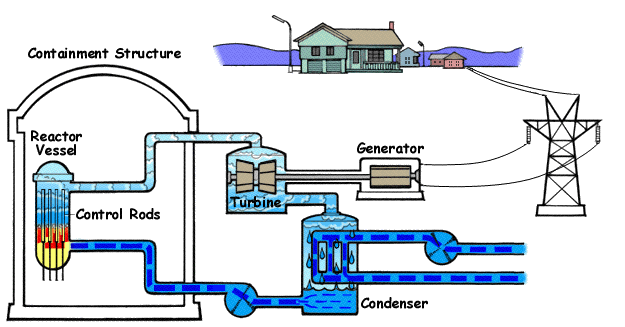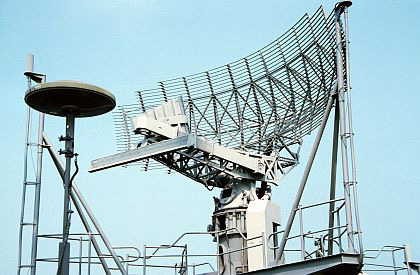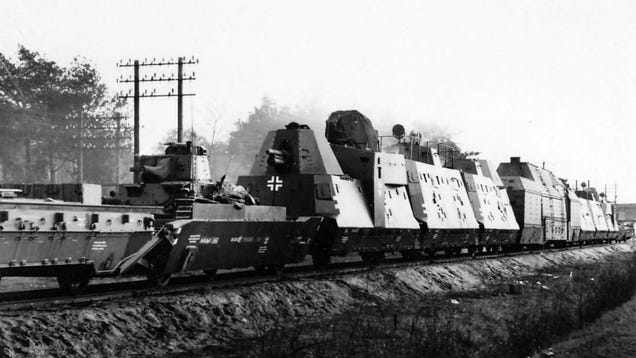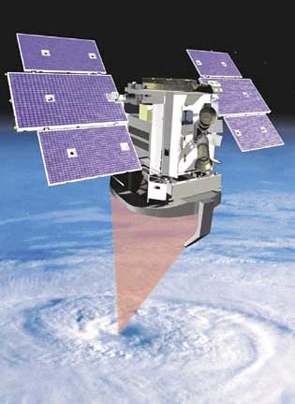Prostate Cancer News - 2015-08-15
General Case Management
Prostate
Cancer Advocacy: Making it Count - Cancer Answers
I thought of the man who spoke to me about fighting metastatic prostate
cancer. He felt not enough was being done. I sensed urgency in his voice. But
though I heard fight in his voice, I also heard desperation — the fear of not
knowing about tomorrow.
Well, none of us are guaranteed tomorrow. So it’s the quality of our days
that counts.
I started the Blue Cure Foundation, a prostate cancer nonprofit, after
being diagnosed with prostate
cancer at age 35. My background was in marketing, and I felt my talents
could be used to place a greater spotlight on the disease — in ways that
haven’t been done. I wanted to change the conversation from ceaseless focus on
fundraising solely for a cure that’s been sought for decades. I wanted us to
consider cancer’s many causes and how we can reduce risk, improve outcomes,
push for more accurate screenings and fight the complacency I find, as if
prostate cancer is both the old and new normal.
Rallying
the Prostate Cancer Community - Cancer Answers
“We don’t have it in our budget.”
That’s the excuse I hear too often from hospitals or cancer centers when I
ask them to light a building blue one evening during September’s National
Prostate Cancer Awareness Month.
They spend money lighting buildings pink in October for Breast Cancer
Awareness Month. They support runs that benefit other cancers. They have lavish
advertising budgets. But no, they can’t manage one night’s support for prostate
cancer – the most commonly diagnosed male cancer in America.
GPs
‘more cost effective’ for prostate cancer aftercare | Irish Examiner
The NCRI’s new study, published in the journal Supportive Care in Cancer,
revealed specialist aftercare for this type of cancer is no longer
“sustainable” here due to the country’s rising number of prostate cancer
survivors. It suggests survivors should switch to GP follow-up sessions instead
as it is a more viable option and will not adversely affect the quality of
aftercare received.
What
IS an “N-of-1″ clinical trial? | THE "NEW" PROSTATE CANCER INFOLINK
N-of-1 clinical trials are
basically trials of specific therapies in a single patient with very highly
defined characteristics — often including a complete genetic profile as well as
a whole bunch of other data. It would be impossible here to get into all the
details about how
N-of-1 clinical
trials should be used and when they provide data that may be helpful in the
management of larger number of patients, so here are a series of resources for
those who might be interested in learning more — because we are going to be
hearing about
N-of-1 clinical trials in prostate
cancer soon:
Latest
prostate cancer findings may help determine the most suitable treatment for the
condition : MEDICINE & HEALTH : Science Times
Prostate cancer may actually be five different diseases masked in one,
scientists conclude after conducting a study that might help in designing the
best treatment for this condition. A team of experts from the Cancer Research
U.K. said that they were finally able to categorize the prostate cancer tumors
into five distinct groups depending on their composite genes.
Prostate
Cancer - Pipeline Review Report H1 2015 | Medgadget
This report provides comprehensive information on the therapeutic
development for Prostate Cancer, complete with comparative analysis at various
stages, therapeutics assessment by drug target, mechanism of action (MoA), route
of administration (RoA) and molecule type, along with latest updates, and
featured news and press releases. It also reviews key players involved in the
therapeutic development for Prostate Cancer and special features on late-stage
and discontinued projects.
Prostate
Cancer on the Web-Expedient Tool for Patients' Decision-Making?
Many patients diagnosed with cancer search for health information on the
Web. We aimed to assess the quality and reliability of online health information
on prostate cancer.
Google, Yahoo, and Bing were searched for the term "prostate
cancer." After selecting the most frequented websites, quality was
measured by
- Quality assessed using
- Popularity assessed using
- LIDA
tool.used to investigate
- accessibility,
- usability, and
- reliability
Quality, accessibility, and usability of websites on prostate cancer
provided a high rating in the current analysis. These findings are encouraging
in view of the growing frequency of patients' access of health information
online.
Evaluation
of medical information quality
Choices you Make
Are
Vitamin E Supplements Healthy or Harmful?
Prostate Cancer: A 2011 study funded by the National Cancer Institute
examined whether vitamin E might help prevent prostate cancer. Earlier research
had found no benefit
or harm from vitamin E. This large study
of 35,533 men over a
period
of three years came up
with a surprising result.
Healthy men
taking vitamin E actually had a higher incidence of prostate cancer than
other men
Access
: The effect of bicycling on PSA levels: a systematic review and meta-analysis
: Prostate Cancer and Prostatic Diseases
Our findings suggest that there is
no effect of cycling on PSA;
however, the limited number of trials and the absence of randomized controlled
trials limit the interpretation of our results. Additionally, the median sample
size only consisted of 42 subjects. Therefore, our study may have low
statistical power to detect a difference in PSA.
Prostate
Cancer and Prostatic Diseases - Physical activity and its mechanistic effects
on prostate cancer
Over the past decade, data have emerged demonstrating the
association between physical activity and prostate cancer risk. Although the
precise biological mechanisms are not yet understood, it is postulated that physical
activity may reduce the risk of prostate cancer directly or indirectly via
inter-related biological pathways. In addition, several studies have shown
decreased or inhibited growth of prostate cancer cells, increased apoptosis of
prostate cancer cells, delayed tumor formation and suppressed metastasis.
Furthermore, these studies hypothesize a variety of biological pathways
mediating the growth inhibitory and pro-apoptotic effects of physical activity
on human prostate cancer cells.
Screening and Diagnosis
You
Were Wondering: When to screen for prostate cancer?
When to start screening is based on individual risk, but age
40 is a reasonable time to start screening for those at highest risk with
genetic predispositions or strong family histories of prostate cancer at a
young age. Otherwise healthy men at high risk with a family history or African
American men should get screened between ages 40 and 45.
Dr.
Samadi: New Study Showing Prostate Cancer Screening Improved by Complete Family
History | Long Island New York
A new study is showing the increasing importance of understand and having a
complete family history of prostate cancer and the correlation to gauging
personal risk with greater accuracy.
Much research over the past few decades, has shown having a first, second or
third-degree relative with prostate cancer raises a Caucasian man’s risks of
the disease. For Caucasian males, a complete family history of prostate
cancer among close and distant relatives may gauge personal risk with greater
accuracy.
If an extensive family history exists and men are aware, it provides awider
range to estimate individual risks that are potentially more accurate than
those based on typical family health histories. Both maternal and paternal
history are equally important.
Is
histological prostate inflammation in an initial prostate biopsy a predictor of
prostate cancer on repeat biopsy?
A histological inflammatory finding at the initial prostate biopsy was
negatively associated with prostate cancer detection in repeat biopsy. This
result could be useful to determine the need for repeat prostate biopsy in
patients with persistently elevated prostate-specific antigen.
Biopsies, Genomics and Pathology
UroNav
Fusion Biopsy System Offered at Dr. Samadi's Prostate Cancer Center... -- NEW YORK,
Aug. 11, 2015 /PRNewswire/ --
NEW YORK, Aug. 11, 2015 /PRNewswire/ -- Renowned Urologist and
Robotic Prostate Cancer Surgeon, Dr. David
Samadi, solely offers the revolutionary
UroNav
Fusion Biopsy System for MRI-Guided Fusion Biopsy in men with an elevated
PSA. Innovated from the company, Invivo, the UroNav brings the power of
MRI
Guided Biopsy to diagnosing
prostate
cancer. This technique has tremendously improved the detection and differentiation
of high and low-risk prostate cancers. Integrating the use of an MRI makes for
a much more accurate diagnosis, especially when it comes to the staging of the
prostate cancer.
The
biology and pathology of “young age” prostate cancer | THE "NEW"
PROSTATE CANCER INFOLINK
A recent article in the
Journal of Clinical Pathology reviews
available data about the epidemiology, biology, and clinical pathology of
“young age” prostate cancer, which the authors define as clinically significant
cancer in men under 55 years of age.
This review article by
Hussein et al. is now available in full, on line, on the Medscape web site,
and will probably be of significant interest to support group leaders, other
prostate cancer educators, and men diagnosed with prostate cancer at such younger
ages.
mpMRIs,
targeted biopsies, and the accuracy of Gleason grading | THE "NEW"
PROSTATE CANCER INFOLINK
A new study that is in press on line in the
Journal
of Urology addresses, very reasonably, the question of whether
using targeted biopsy methods based on multiparametric MRI (mpMRI) data is
improving our ability to accurately assess patient’s Gleason grades and scores
prior to decisions about treatment.
According to the abstract of this new paper by the French clinical research
team (
Lanz et al., based in Paris), the answer appears to be a
definitive “Maybe”.
A
Contemporary Prostate Cancer Grading System: A Validated Alternative to the
Gleason Score.
Despite revisions in 2005 and 2014, the Gleason prostate cancer (PCa)
grading system still has major deficiencies. Combining of Gleason scores into a
three-tiered grouping (6, 7, 8-10) is used most frequently for prognostic and
therapeutic purposes. The lowest score, assigned 6, may be misunderstood as a
cancer in the middle of the grading scale, and 3+4=7 and 4+3=7 are often
considered the same prognostic group.
The new PCa grading system has these benefits: more accurate grade
stratification than current systems, simplified grading system of five grades,
and lowest grade is 1, as opposed to 6, with the potential to reduce
overtreatment of PCa.
We looked at outcomes for prostate cancer (PCa) treated with radical
prostatectomy or radiation therapy and validated a new grading system with more
accurate grade stratification than current systems, including asimplified
grading system of five grades and a lowest grade is 1, as opposed to 6, with
the potential to reduce overtreatment of PCa.
Molecular
Profiles Can be Used for Early Detection of Aggressive Prostate Cancer - Cancer
Therapy Advisor
In a first-ever study, findings identified five gene sets that can predict
clinical outcome in independent patient cohorts with
prostate cancer, according to researchers in England.
1
Combining gene copy number and gene expression data has yielded a new
100-gene risk-stratification signature for prostate cancer that appears to
outperform prostate specific antigen (PSA) and Gleason scores, and might allow
early detection of the most aggressive cases.
The
five faces of prostate cancer? - Cancer Research UK - Science blog
Dr
Lamb’s team has shown, for the first time, that prostate cancer can be
divided into
five distinct groups,
each of which has a unique molecular signature that appears to predict how well
a patient will do after surgery.
They found that by using this group of 100 genes – or
gene signature –
prostate cancer patients who’d had surgery to remove their prostate could be
divided into
five distinct sub-groups.
- One group had lots of DNA
deletions and consequently low activity of certain genes
- Another had high amounts of
DNA repetition which resulted in increased activity of specific genes.
- Two more groups had very few
copy-number alterations, or changes in activity.
- The fifth and final group had
some – but not too many – copy-number alterations.
Multimodal
image-guided prostate fusion biopsy based on automatic deformable registration.
The prostate TRUS images are automatically
segmented with a Hough transform-based random forest approach. The registration
is based on the Coherent Point Drift algorithm to align surfaces elastically
and to propagate the deformation field calculated from thin-plate splines to
the whole gland.
RESULTS - The method, which has minimal
requirements and temporal overhead in the existing clinical workflow, is
evaluated in terms of surface distance and landmark registration error with
respect to the clinical ground truth. Evaluations on agar-gelatin phantoms and
clinical data of 13 patients confirm the validity of this approach.
MAPPING MOLECULES TO
FIGHT CANCER
The Cancer Genome Atlas project, or
TCGA, is a collaborative effort between the NHGRI and the National Cancer
Institute. Since 2006, Hutter and her team have worked to characterize the
various cancers in more precise terms. In nine years, they have mapped
thousands of gene sequences, constructing molecular models, or “maps,” of the
numerous types of tumors. By examining patterns of molecular changes between
the healthy tissue and the tumor, the TCGA team was able to construct maps that
will help doctors understand cancer better.
With these molecular-level models, Hutter hopes to change the medical
field’s way of thinking about cancer as a single entity. “Five to ten years
from now, people are never going to just say, ‘I have liver cancer,’” she
explained. With this new research, doctors will be able to classify cancer in
an entirely new way, giving individuals the tools to understand and describe
their illness in more specific terms.
Tests
Cancer-detecting
dogs approved for NHS trial | Life and style | The Guardian
Dogs capable of
sniffing out cancer have been approved for use in a trial by the NHS. The
charity Medical Detection Dogs has gained approval from Milton Keynes
University Hospital for further trials, after an initial study showed specially
trained dogs can detect prostate tumours in urine in 93% of cases.
It is hoped canine testing could help show up inaccuracies in the
traditional Prostate-Specific Antigen (PSA) test, used to determine if men need
a biopsy. The test has a high “false positive” rate, and many men are
unnecessarily referred for the invasive procedure.
Smart
Technology Could Improve Prostate Cancer Diagnosis - Aug 10 2015 12:27 PM -
University of Birmingham - Labmate Online
A smart sensor chip able to pick up on subtle differences in glycoprotein
molecules and believed to have ability to improve the accuracy and efficiency
of prostate cancer diagnosis has been developed by scientists at the University
of Birmingham.
The team of chemical engineers and chemists created the chip with synthetic
receptors along a 2D surface to identify specific, targeted glycoprotein
molecules that are differentiated by their modified carbohydrate chains, unlike
current tests which rely heavily on antibodies which are less robust and have
been shown to have a high rate of false-positive readings.
Imaging
Prostate
Cancer and Prostatic Diseases - Magnetic resonance imaging on disease
reclassification among active surveillance candidates with low-risk prostate
cancer: a diagnostic meta-analysis
MRI, especially multiparametric (MP)-MRI, has a moderate diagnostic accuracy
as a significant predictor of disease reclassification among AS candidates. The
high NPV and specificity for the prediction of biopsy reclassification upon
clinical follow-up suggest that negative prostate MRI findings may support a
patient remaining under AS. Although the PPV and sensitivity for the prediction
were relatively low, the presence of a suspicious lesion >10 mm lesion may
suggest an increased risk for disease progression.
Treatment
Active Surveillance
Prostate
cancer: Avoiding excess confirmatory biopsies : Nature Reviews Urology : Nature
Publishing Group
A new predictive model could help omit unnecessary confirmatory biopsy in
men with prostate cancer at low risk of reclassification on active
surveillance.
The retrospective study, performed by researchers from the Memorial Sloan
Kettering Cancer Center, NY, USA, included 392 patients diagnosed with Gleason
score 6 prostate cancer upon initial biopsy.
Designing
Normative Messages About Active Surveillance for Men With Localized Prostate
Cancer.
The authors examined the acceptability of normative messages about active
surveillance as a management option for patients with low-risk prostate cancer.
Men with a diagnosis of localized prostate cancer who were recruited through
prostate cancer support organizations completed a web-based survey
(N = 331). They rated messages about active surveillance for
believability, accuracy, and importance for men to hear when making treatment
decisions.
The message "You don't have to panic … you have time to think
about your options" was perceived as believable, accurate, and important
by more than 80% of the survivors. In contrast, messages about trust in the
active surveillance protocol and "knowing in plenty of time" if
treatment is needed were rated as accurate by only about 36% of respondents.
For active surveillance to be viewed as a reasonable alternative
, men will need reassurance that following
an active surveillance protocol is likely to allow time for curative treatment
if the cancer progresses.
Surgery
Similar to horseshoes
and hand grenades
Close
Surgical Margins Raise Risk of Prostate Cancer Return - Renal and Urology News
Close surgical margins in radical prostatectomy specimens are associated
with biochemical recurrence (BCR) rates similar to those of positive surgical
margins, according to a new study.
In study of 609 patients who underwent radical prostatectomy for
prostate
cancer, patients who had close and positive surgical margins on final pathology
had 3-year BCR-free survival rates of 70.4% and 74.5%, respectively, a
non-significant difference between the groups, Michael J. Whalen, MD, of the
Icahn School of Medicine at Mount Sinai Hospital in New York, and colleagues
reported. By comparison, patients with negative margins had a 3-year BCR-free
survival rate of 90%, which was significantly higher than the rates for
patients with close and positive margins. On multivariable analysis, patients
with close margins had a 2.7-fold increased risk of BCR compared with those who
had negative margins.
Radiation
New Data on Prostate
Cancer, Salvage Radiation, and Survival
Patients experiencing biochemical failure — defined as an increase in
prostate-specific antigen (PSA) level — after prostatectomy for prostate cancer
often receive salvage radiation therapy (SRT) to control the disease and
prevent metastases.
However, despite SRT, some patients still exhibit biochemical failure. Now,
a long-term, single-center study,
published
online July 9 in the
American Journal of Clinical
Oncology, has demonstrated that outcomes for 61 men who experienced
a biochemical recurrence after surgery, including a subset of 34 men who
experienced failure twice (once after surgery and once after SRT), are robust.
The median overall survival was 13.6 years for the men in the study who had
two biochemical recurrences and 14.7 years for the men who had just the one
recurrence after surgery, report the authors, led by D. Nathan Kim, MD,
PhD, from Texas Oncology in Waco.
Furthermore, the 10-year prostate-cancer-specific, metastasis-free, and
castration-resistant-free survival (from the time of PSA failure after SRT)
rates were all in excess of 70% for the men who had two biochemical
recurrences.
Prostate
Cancer and Prostatic Diseases - The significance of circulating tumor cells in
prostate cancer patients undergoing adjuvant or salvage radiation therapy
Following radical prostatectomy, success of adjuvant and salvage radiation
therapy (RT) is dependent on the absence of micrometastatic disease. However,
reliable prognostic/predictive factors for determining this are lacking. Therefore,
novel biomarkers are needed to assist with clinical decision-making in this
setting. Enumeration of circulating tumor cells (CTCs) using the
regulatory-approved Cell Search System (CSS) is prognostic in metastatic
prostate cancer. We hypothesize that CTCs may also be prognostic in the
post-prostatectomy setting. Our results suggest that CTCs may be indicative of
disseminated disease and assessment of CTCs during RT may be helpful in
clinical decision-making to determine, which patients may benefit from RT
versus those who may benefit more from systemic treatments.
Men with intermediate- or high-risk prostate cancer
experienced higher survival rates when given increased radiation doses than men
with low-risk disease, according to researchers from Penn Medicine. In
addition, men with low-risk disease but with already-high survival rates were
unaffected by higher radiation doses.
Anusha Kalbasi, MD, and colleagues compared the survival
rates of 42,481 men who were diagnosed between 2004 and 2006 and followed
through 2012 and linked those rates with increased radiation doses in the
National Cancer Database. The researchers investigated whether “radiation dose
reduction for patients with low-risk prostate cancer could achieve similar cure
rates while avoiding the increased risk of side effects associated with higher
radiation doses,” said Kalbasi, a resident in the department of radiation
oncology at the Perelman School of Medicine at the University of Pennsylvania.
-
Judge
Tells Aetna to Pay for Proton RT for Prostate Cancer
CORPUS CHRISTI, Texas,
Aug.
6, 2015 /PRNewswire/ -- Today,
Robert C. Hilliard
of Hilliard Munoz Gonzales LLP (HMG) obtained an Order from a
Newton County judge granting a restraining order
against Aetna Insurance, preventing the insurance company from denying
life-saving
cancer treatment for his client,
Bobby Allen Bean.
Mr. Bean, a 1973 graduate of Newton County High School who has lived in
Newton with his wife for over forty years, is
suffering from advanced
prostate cancer
and is currently being treated at
Houston's MD
Anderson. Based upon Mr. Bean's medical history, his
doctors have recommended that he receive Proton Radiation Therapy; the only
other options to treat the
cancer are too risky for Mr. Bean because he also
suffers from insulin-dependent Type 2 diabetes. Despite his doctor's
recommendations, his medical insurance carrier, Aetna, has refused to cover the
treatment, claiming that it is "experimental."
Hormone
Androgen
Deprivation for Localized Prostate Cancer Ups Cardiac Risks - Renal and Urology
News
Androgen deprivation therapy (ADT) with gonadotropin-releasing hormone
(GnRH) agonists is associated with an increased risk of cardiac events in
elderly men with localized
prostate cancer and a decent life expectancy, new findings suggest.
“Clinicians should carefully weigh the risks and benefits of ADT in patients
with a prolonged life expectancy,” the authors concluded in a paper published
online ahead of print
in BJU International. “Routine screening and
lifestyle interventions are warranted in at-risk subpopulations treated with
ADT.”
Chemo
How
Tokai Pharmaceuticals is using precision medicine for prostate cancer - Boston
Business Journal
Morrison says
that
study turned out to be key to Tokai’s pitch to investors. Her company
already had Phase 2 data showing that its drug, called
galeterone, worked
in those same patients, who have a shortened version of something called the
androgen receptor. In August of that year, the FDA had already approved Tokai’s
reworked late-stage trial to focus on just those patients, which make up around
a fifth of all patients with the disease. As long as galeterone’s demonstrated
ability to stop the growth of prostate cancer in those patients held up, the
trial had a high probability of success, since the NEJM study seemed to ensure
that the drugs galeterone was being compared to — Zytiga, sold by
Johnson
& Johnson (NYSE: JNJ), and Xtandi, sold by
Astellas
— would have no effect at all.
New approach
to decades old treatment yields increased survival for some prostate cancer
patients - Medical News Today
For more than 60 years, the standard of care for patients with
prostate cancer
fueled by androgen hormones that has spread to other parts of the body has been
androgen deprivation therapy (ADT). While the response rate is high, resistance
to ADT often occurs. Generally, when ADT is no longer working,
chemotherapy is
administered for these patients. Research coordinated by the ECOG-ACRIN Cancer
Research Group, supported in part by the National Cancer Institute, and
published in the current online version of
The New England Journal of
Medicine, examined the outcomes of giving the chemotherapy drug
docetaxel at the start of ADT. Results showed an increased survival of 13.6
months for patients treated with ADT plus docetaxel than with ADT alone.
Androgen
pathway resistance in prostate cancer and therapeutic implications.
Metastatic prostate cancer is an incurable disease that is treated with a
variety of hormonal therapies targeting various nodes of the androgen receptor
(AR) pathway. Invariably patients develop resistance and become castration resistant.
Common treatments for castration-resistant disease include novel hormonal
therapies, such as abiraterone and enzalutamide, chemotherapy, immunotherapy
and radiopharmaceuticals. As this disease generally remains incurable,
understanding the molecular underpinnings of resistance pathways is critical in
designing therapeutic strategies to delay or overcome such resistance.
New Techniques
Researchers
develop "intelligent" training tool to treat prostate cancer
Researchers at Carnegie Mellon University have developed a new approach to
improve training for cryosurgery, a procedure used to treat prostate cancer by
freezing and destroying the diseased tissues. The new approach will shorten the
learning curve and improve the quality of the minimally invasive treatment by
reducing complications, shortening recovery times and lowering health care
costs.
Yoed Rabin, a professor of mechanical engineering and a board member of the
American College of Cryosurgery, has led the development of this first
computerized training tool. This intelligent training tool provides feedback to
the trainee and offers advice on how to maximize the freezing of
cancer tumors while
preserving the healthy tissues surrounding the site.
Side Effects
Prostate
Cancer May Impact Relationship Satisfaction Among Couples - Cancer Therapy
Advisor
Results showed that both patients and spouses experienced reduced mental and
physical health at 1 month after surgery, but health was mostly improved at 6
and 12 months.
Researchers found that patient's physical health correlated
with patient's relationship satisfaction, and both patient's and spouse's
mental health were associated with their own relationship satisfaction.
Another
Side Effect of Cancer: Suicidal Thoughts
In a
survey
of prostate cancer survivors, Recklitis and his colleagues found that 12
percent of respondents experienced suicidal ideation in the previous year. Physical
and emotional health, pain, work status, and incomewere found to be
contributing factors. Depressed mood was linked with suicidal ideation. So was having
a previous mental health condition
[RC1] .
There was no link between suicidal ideation and age. Type of treatment,
recurrence, or time since diagnosis didn’t matter.
Advanced/Recurrence
Stretching
survival from advanced prostate cancer | afr.com
A new study has confirmed that men with metastatic, hormone-sensitive prostate
cancer can gain more than a year of survival when they simultaneously receive
hormone-blocking medications and chemotherapy right after diagnosis.
Case
Study: Newly Diagnosed Metastatic Prostate Cancer
Final
CHAARTED data now published in NEJM | THE "NEW" PROSTATE CANCER
INFOLINK
The
final results of the CHAARTED trial, recommending early treatment with the
combination of androgen deprivation therapy (ADT) and chemotherapy, at least in
men with extensive metastasis at diagnosis, have just been published this week
by Sweeney et al. in
The New England Journal of
Medicine (NEJM). The combination of these data with
the data reported from the STAMPEDE trial at ASCO in 2015
has now provided compelling evidence supporting combination therapy (with ADT
and docetaxel-based chemotherapy) for men newly diagnosed with metastatic
prostate cancer — and most particularly for those men initially diagnosed with
more extensive forms of metastatic disease.
Long-term
Outcome of Prostate Cancer Patients Who Exhibit Biochemical Failure Despite
Salvage Radiation Therapy After Radical Prostatectomy.
Salvage radiation therapy (SRT) is an effective treatment
for recurrent prostate cancer (PCa) after radical prostatectomy. We report the
long-term outcome of men who developed biochemical recurrence (BCR) after SRT
and were treated >14 years ago. Extended
follow-up demonstrates that despite SRT failure, prostate
cancer-specific survival (PCSS) was 84% and remains high in select patients.
Early failure (≤1 y after SRT) predicted for significantly worse outcome and
may represent a subgroup with more aggressive disease that may be considered
for further prospective clinical studies.




























